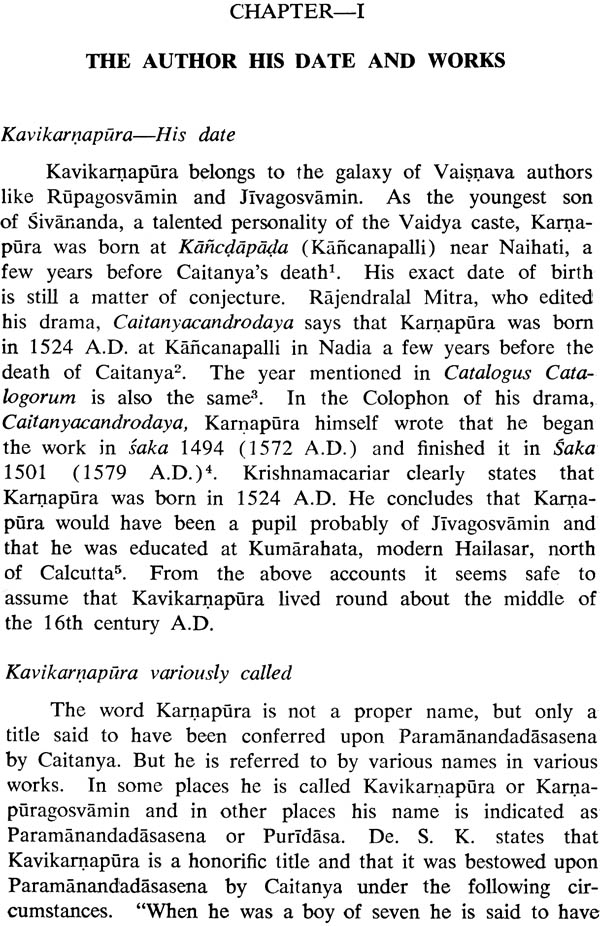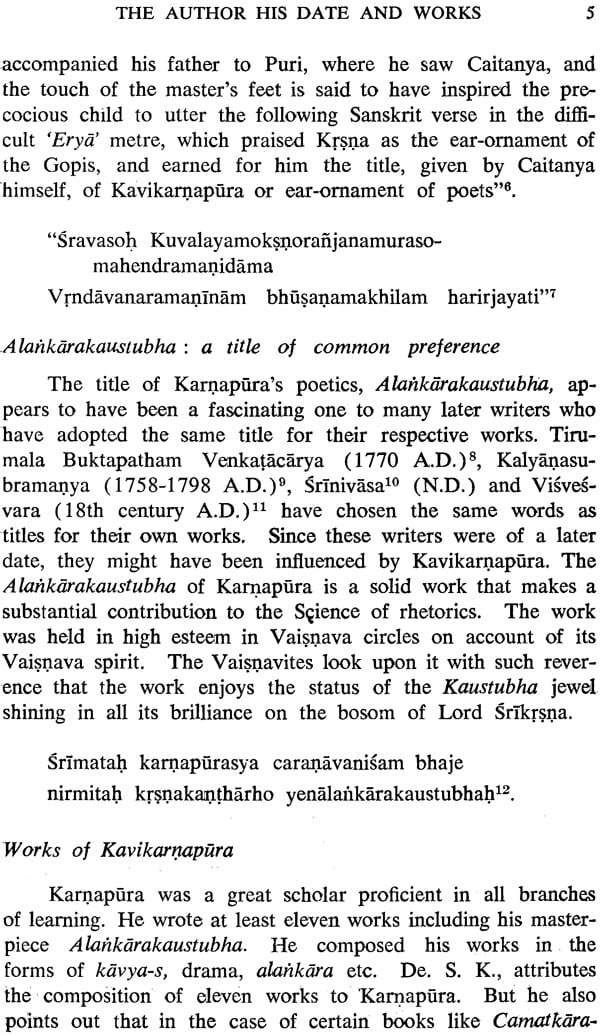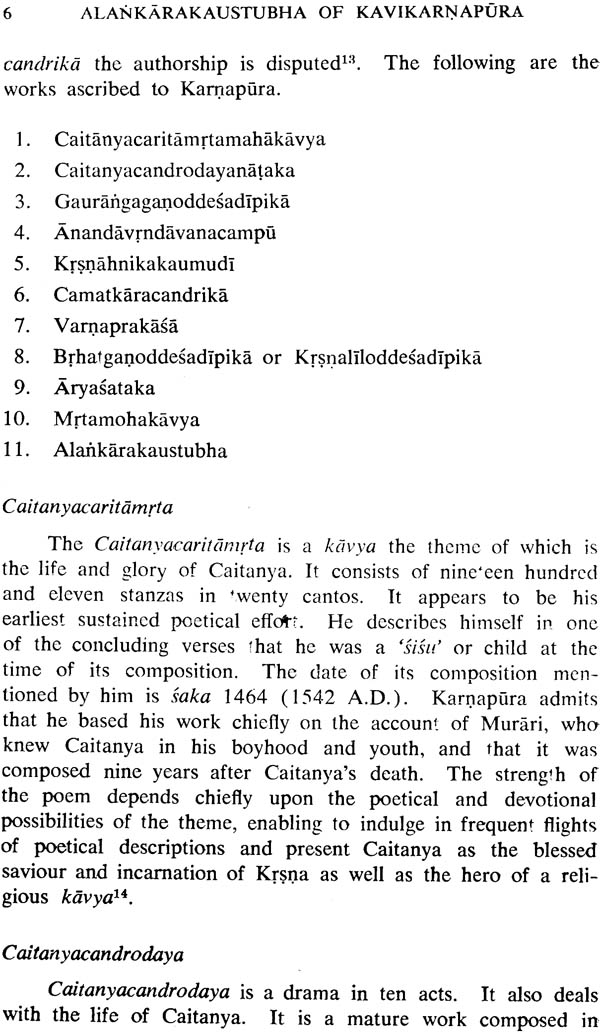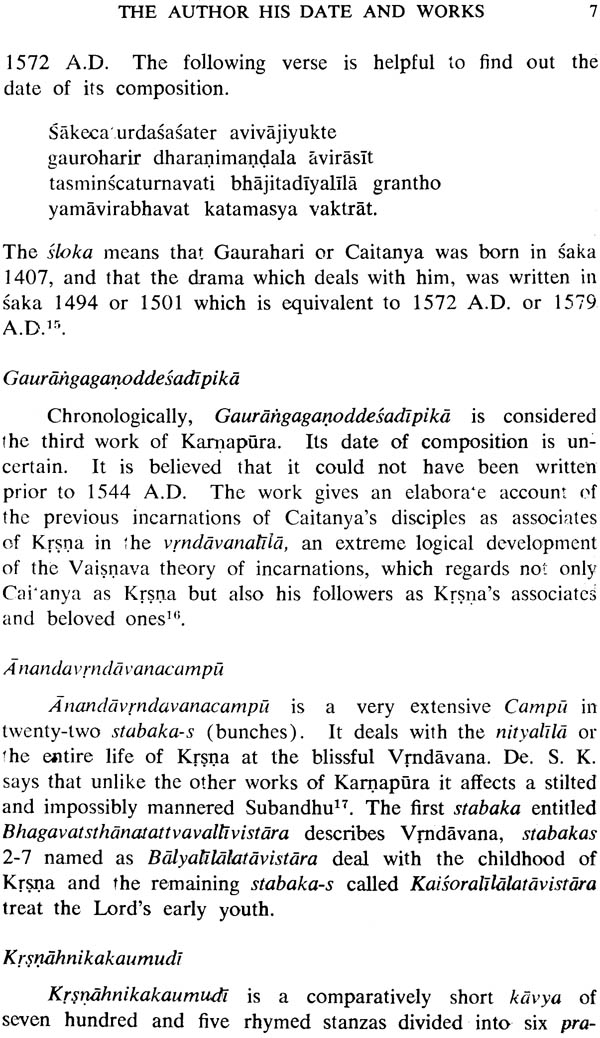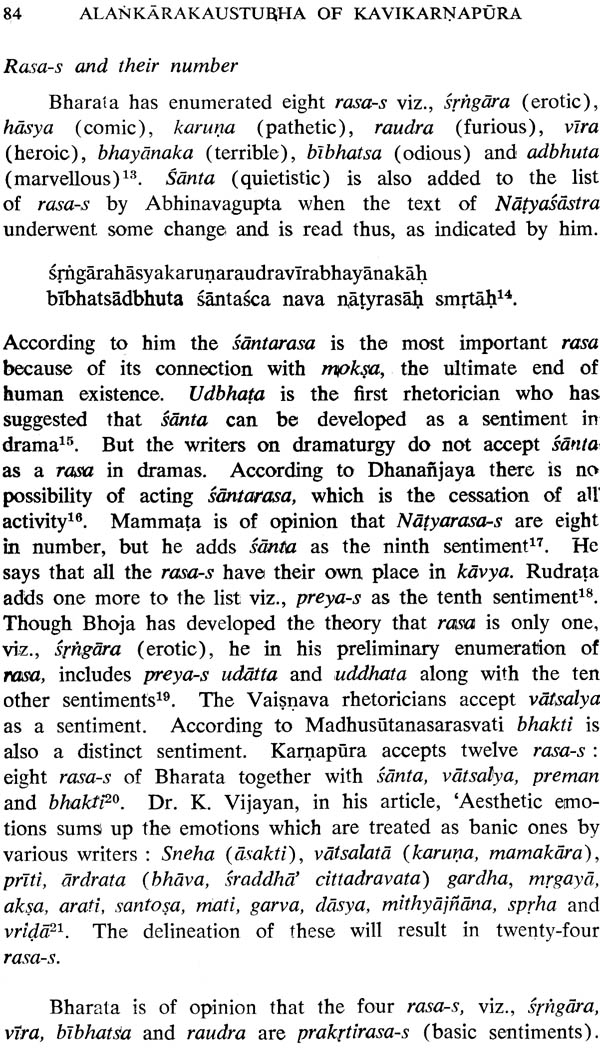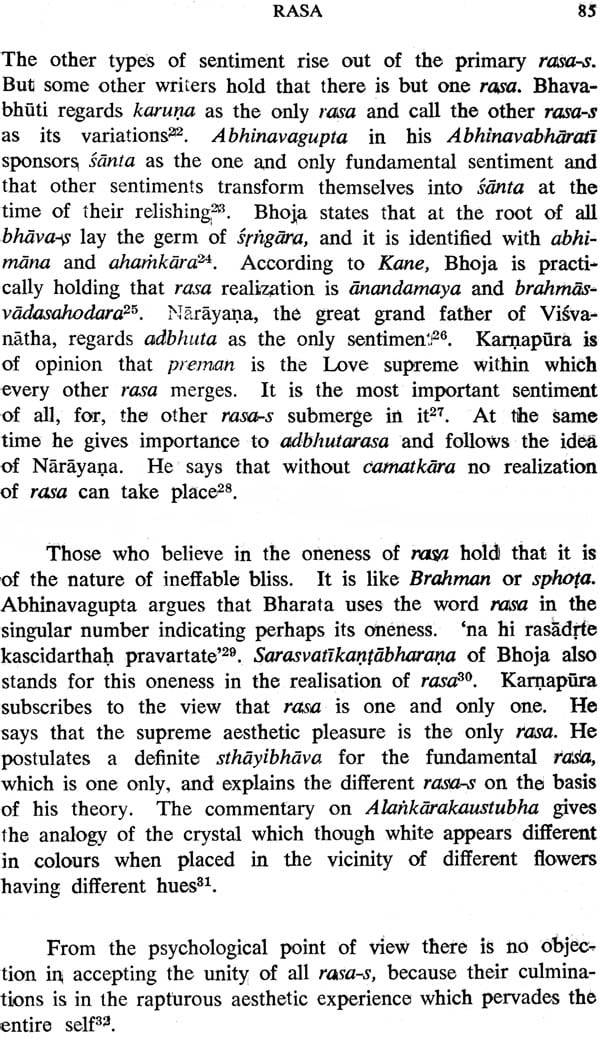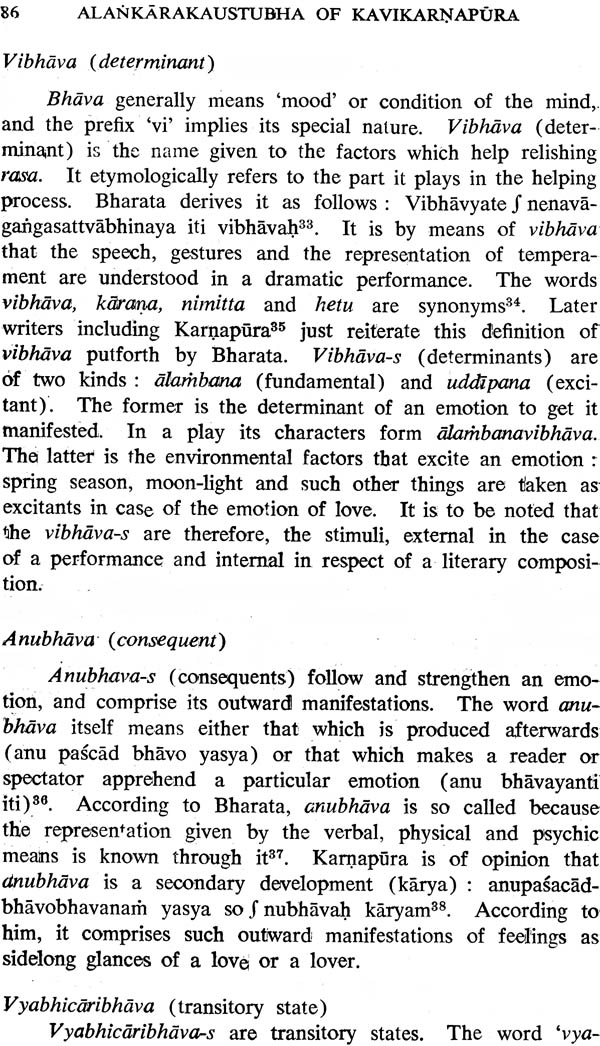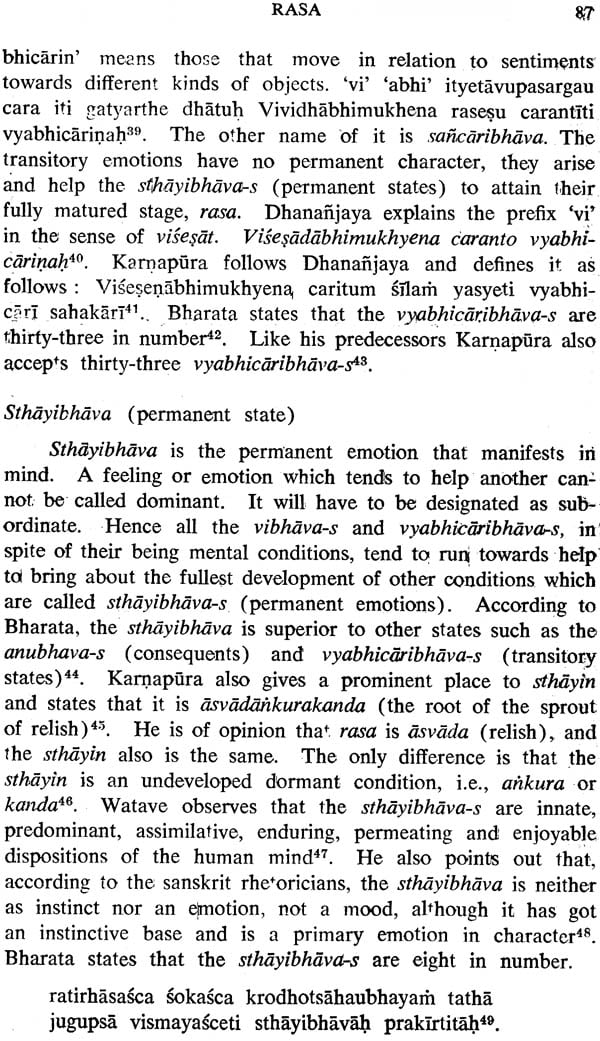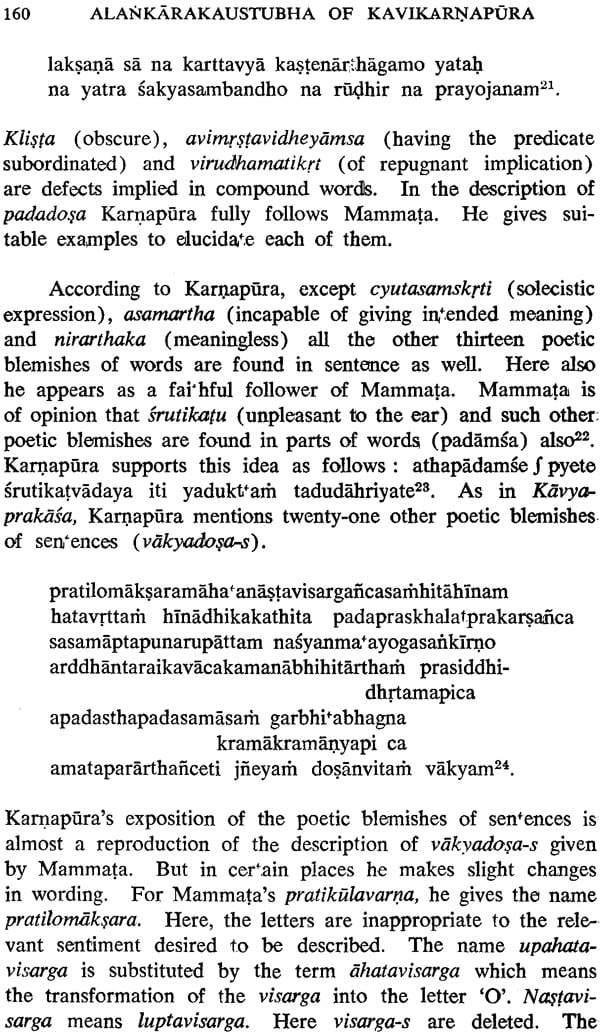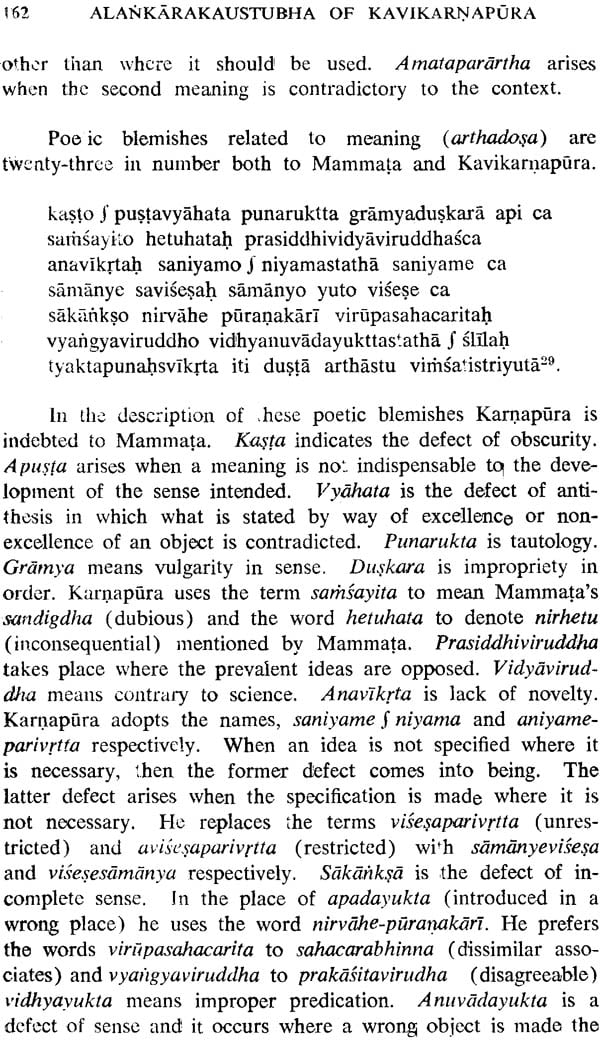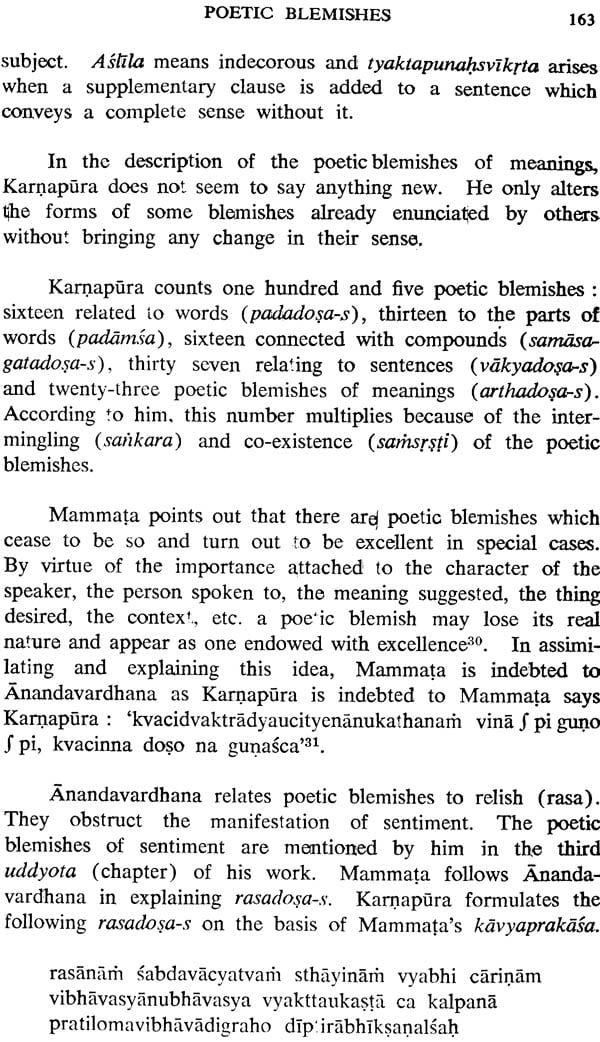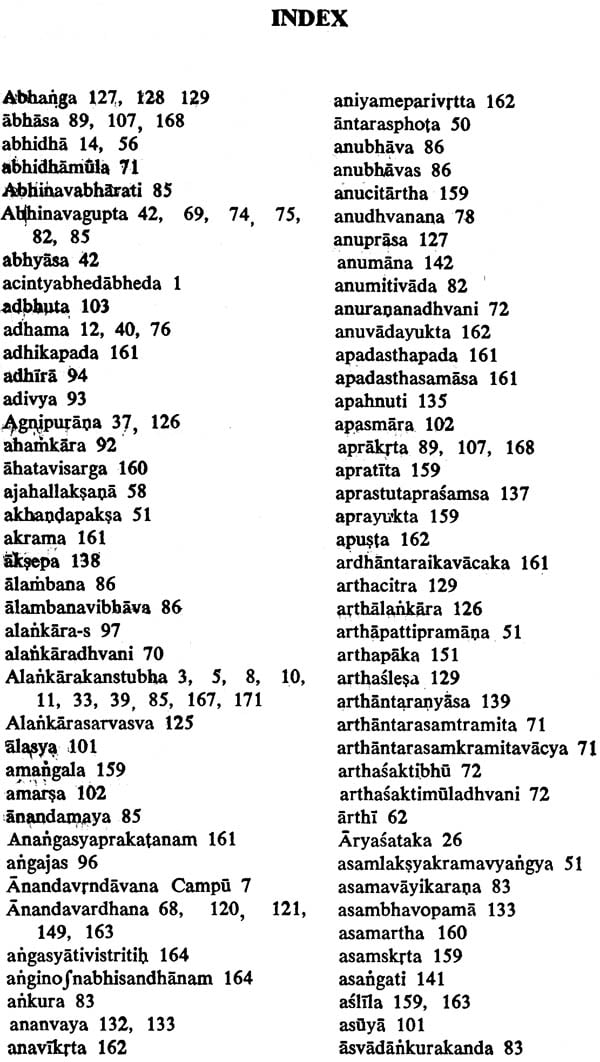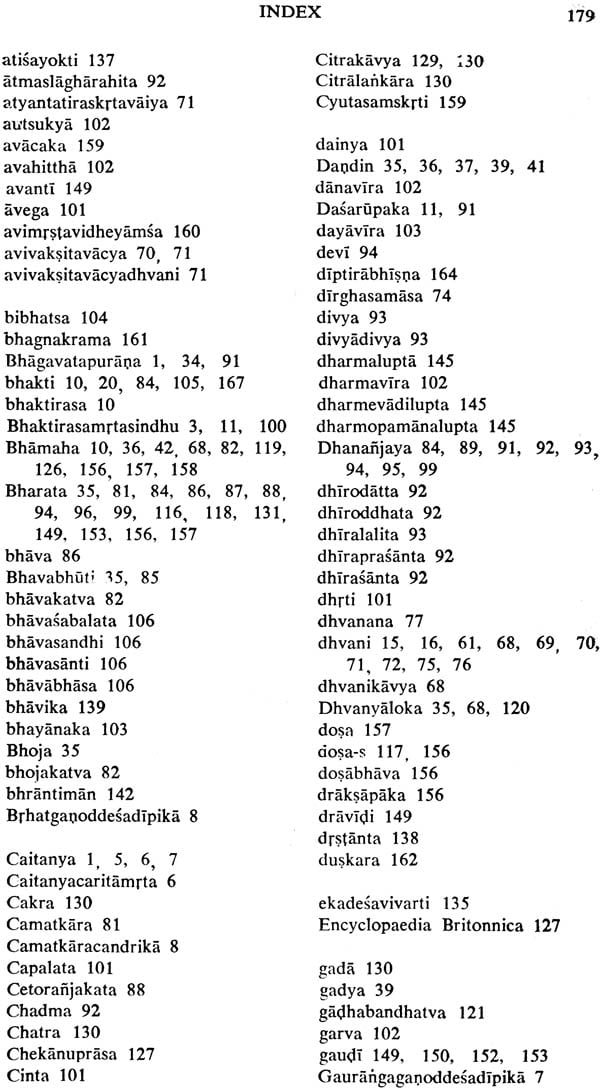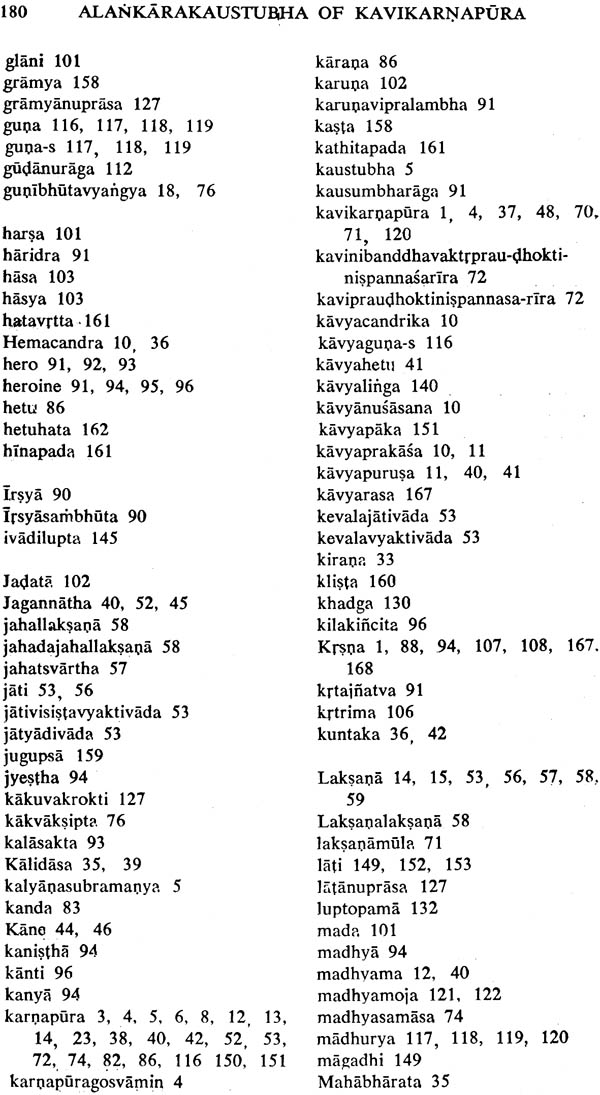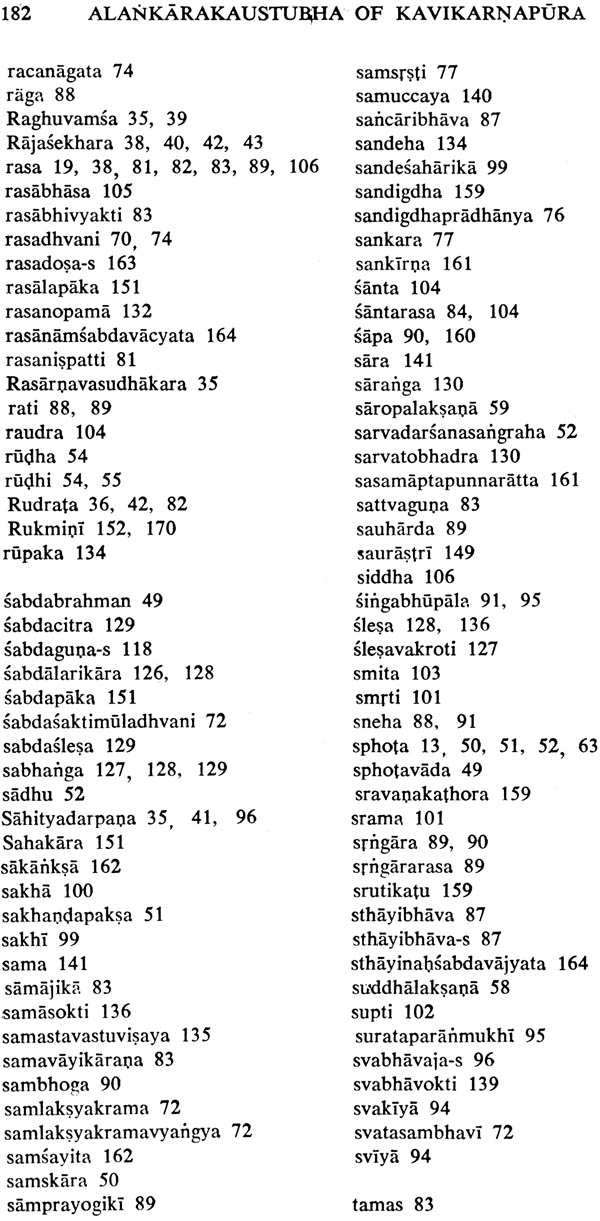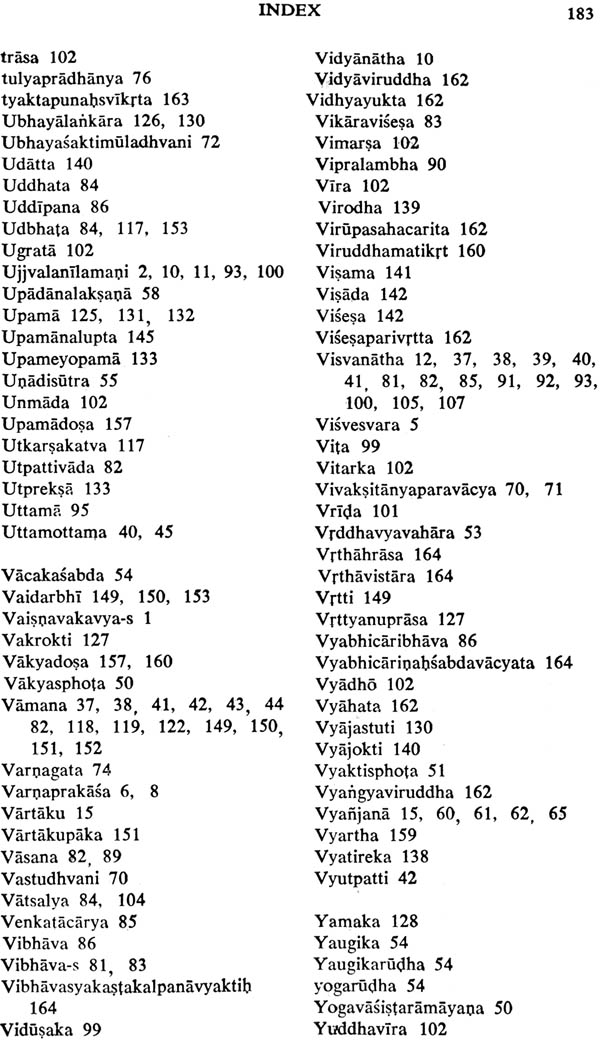
Alankara Kaustubha of Kavikarnapura - A Study (An Old Book)
Book Specification
| Item Code: | NAJ874 |
| Author: | A. Girija |
| Publisher: | PUNTHI PUSTAK |
| Language: | English |
| Edition: | 1991 |
| ISBN: | 8185094403 |
| Pages: | 202 |
| Cover: | Hardcover |
| Other Details | 8.5 inch X 5.5 inch |
| Weight | 320 gm |
Book Description
Work—Alankarakaustubha of kavikarnapura contains twelve chapters. The introduction sums up the contribution of Bengal to Sanskrit especially to Sanskrit poetics upto the middle of the 16th Century. The first chapter deals with the author, his date origin and sources of Alankarakaustubha and passes on to a detailed analysis of the work. The Characteristics of Alankarakaustubha are examined in the third chapter. Chapters 4-11 deal with the definition of poetry, the place of sound and sense, the superiority of the theory or dhvani, the nature of Rasa, style, poetic qualities, embellishments and blemishes. The last chapter sums up the contribution of kavikarnapura to Sanskrit poetics.
Dr. A. GIRIJA, U.G.C. Research Associate, University of Kerala, took her M.A. Degree in Sanskrit with Vyakarana as her special subject. Her M. Phil dissertaion entitled "Sri Balararna- vijayacampu-A study" has won the apprecia- tion of many sanskrit savants. She received Ph.D degree from the University of Kerala for the present work "Alankarakaustubha of kari- kamapura-A study". She has to her credit several papers in English and Malayalam. Cur- rently Miss. GIRIJA is engaged in the prepara- tion of a monograph on "Narayanabhattatiri- A Grammatic genius."
I am indeed gratified to bring to the notice of Sanskritists this new book on poetics entitled Alankarakaustubha of Kavikarnapura-i-A study by Dr. A. Girija. The work has won for her the Degree of Doctor of Philosophy of the University of Kerala.
Kavikarnapura, the author of Alankarakaustubha belongs to the galaxy of Vaisnava writers of the order of Rupagosvamin and Jivagosvamin who have established that Vaisnavabhakti is the Rasa par excellence. His Alankiirakaustubha has become another Kaustubha adorning with grace the chest of Lord Krsna along with the real Kaustubha. The virtue of this work is that it sums up all that has been discussed in the field of poetics. In this respect it closely follows Mammata; but the originality of the author reveals itself on several occasions. His division of kavya into Uttamottama over and above the usual three types, viz., Uttama, Madhyama and Adhama has influenced Panditaraja Jagannatha, Though Kavikarnapura stands for Rasadhvani he has not neglected the relevance of either sabda or artha as is usually done by the advocates of the theory of dhvani. In unequivocal terms he declares that kiivya becomes splendid if proper care is bestowed on the twin aspects of sabda and artha. He introduces the terms Vyanjanavyapara in the place of Vvanianavyapara, and maintains that it is real door- way that opens to the world of dhvani.
In the present thesis Dr. Girija makes a comparative study of the various poetical concepts presented in Alankiirakaustubha. They include among other things the definition of poetry, the place of sound and sense, the superiority of the theory of dhvani, the nature of Rasa, style, poetic qualities, embellishments and blemishes. The in fluences of Kiivyaprakiisa on Alankarakaus- tubha is well pointed out. It is argued that such borrowals from writers of old are intended to make the work more comprehensive. Despite being an ardent follower of the Vaisnava cult Karnapura is never dogmatic in his approach to aesthetic concepts. He accepts Mammata's dictum on the aims of poetry. But he goes one step beyond Mammata and asserts that the ultimate aim of poetry is the realization of Krsnabhakti. To him the divine love between Radha and Krsna is the ultimate Rasa and all others lead to it. In the treatment of sabda and artha Karnapura draws certain ideas from Upanisads and Tantric texts.
The thesis thus makes a comprehensive and systematic study of all the topics dealt with in Alankiirakaustubha. Every topic in the original text is discussed in the light of what has been stated earlier right from the date of Bharata. The Originality of Kavikarnapura is brought well in full measure. Dr. Girija deserves all credit for the original and systematic way in which she has tackled the subject. I am sure that this work will prove .to be highly profitable to all those interested in the study of Sanskrit poetics.
Alankiirakaustubha is an important work on rhetorics produced by Kavikarnapura, the renowned Vaisnava writer of Bengal, belonging to the sixteenth century. The main intention in composing this work is to improve upon the definitions of the usual topics in sanskrit poetics, and provide illustrations in praise of his favourite deity, Lord Krsna, besides endeavouring to establish bhakti as the supreme relishable sentiment. In a powerful language he criticises his opponents as and when he finds it necessary.
The present thesis entitled Alankarakaustubha of Kavikarnapura-c-A study represents the work I did as a research student in the Department of Sanskrit under the guidance of Dr. K. Vijayan. My attempt in the main remains the comparative study of the topics connected with poetics dealt with in all the ten kirana-s in the book. The thesis contains twelve chapters. The introduction sums up the contribution of Bengal to Sanskrit especially to Sanskrit poetics upto the period of Kamapura. The first chapter deals with the author, his date and works. The second chapter discusses the origin and sources of AIankiirakaustubha and passes on to a detailed analysis of the work. The characteristics of Alankiirakaustubha are examined in the third chapter. The fourth chapter is devoted to a critical study of the definition of poetry. The fifth chapter examines the power of words. Poetic suggestion is explained in the sixth chapter. The seventh chapter is devoted to a discussion of sentiment (rasa). Poetic qualities are detailed in the eighth chapter. The ninth chapter attempts to ascertain the place of poetic embellishments. Style (riti) is examined in the tenth chapter. The eleventh chapter discusses the poe- tic blemishes and the last chapter sums up the contribution of Karnapura to Sanskrit poetics.
In preparing this dissertation I am deeply indebted to Dr. K. Vijayan, Reader, Department of Sanskrit, University of Kerala for the valuable guidance I have received from him. r am also grateful to Dr. N. P. Unni, Head of the Department of Sanskrit, University of Kerala for his valuable suggestions.
Let me express my thanks to the University of Kerala and: the University Grants Commission for giving me financial assistance in connection with the preparation of my thesis.
Contribution of Bengal to Sanskrit
Philosophies inspire literature and the discovery of new philosophical sysems either gives rise to new forms of literary creations or helps the reorientation of existing literature in a new perspective. This has been virtually true in the case of undivided Bengal, which in the ] 5th century A.D. witnessed a renaissance of Sanskrit literature consequent on the growth and spread of the Vaisnava philosophy known as a-cintya-bheda- bheda of Caitanya. All branches of literature particularly those of kavya, drama, grammar and poetics became active. There was an abundant flow of literary works alike in their content and form. But, curiously enough the lion's share of these works were the compositions of a handful of writers, of about half a dozen scholars. Among them the two brothers, Rupa and Sanatana, and Krsnadasakaviraja and Kavikarnapura were the most significant both in the quantity and quality of their creations.
The followers of the caitanya school of philosophy are inspired by Bhiigavatapuriinae. Many of them wrote commentaries on the text and others in their literary works imbibed its spirit. Among the commentaries on the Bhagavata, the works of Sanatana, Jiva, Visvanatha and Baladevavidyabhusana are noteworthy. Baladeva's commentary on the ten Upanisads, Vasudeva's Tattvadipika and Arupanarayana's Samaiijasavrtti are also important.
Sanatana's Haribhaktiviliisa is the most prominent among the ritualistic works of the Vaisnavas. Reference may also be made of Ramaprasada's Sarasangrahadipikii, though it is only a minor work.
There are innumerable Vaisnavakavya-s and dramas which deal exclusively with the story of Krsna and his associates. However there are also a few such writings which seek to depict the life story of Caitanya. Anandavrndtivanacampu of Kavikarnapura is a work on the life story of Krsna in twenty- two stabakiis. The amorous sports of Radha and Krsna form the subject of Raghunathadasa's Muktacarita. Gopiilacampu of Jlva and Govindalilamrta of Krsnadasa are o’her important works belonging to this category.
Among the several dramatic compositions, mention may be made of Rupa's Lalitiimadhava, Vidagdhamadhava, Danakelikaumudi, etc. The Caitanyacaritamatamahakavya and Caitanya- candrodayanataka of karnapura delineate the story of the life of Caitanya.
The Vaisnavitemugdhabodha always refers to Krsna and his associates. Hariruimamrtavyiikarana of Jiva is a grammatical work of some popularity among the more orthodox Vaisnavas of Bengal. The other two favourite works of the Bengal Vaisnavites are Caitanyanata and Vyakaranakaumudi of Baladevavidyabhusana. The most popular historical kavya is the Caitanyacaritamrta of Krsnadasa. Even though written in Bengali, it is interspersed with sanskrit verses. Works written exclusively in Sanskrit are generally of the contemporaries of Caitanya.
Earby contributions of Bengal to rhetorics
Though Bengal had evolved a style of writing of her own from a very early period, her contributions to the theories of poetic composition are meagre. In fact, no work on poetics was written in Bengal before the 15th century AD. But from 15th century onwards Bengal produced several original works on poetics. Most of them are the works of Vaisnava teachers and are therefore sectarian in character. The latter fact has considerably reduced their popularity and none of them is as well known and widely recognised as the Kavyaprakiisa of Mammata.
The earliest work on poetics seems to have been the Vaisnavite Ujjvalanilamani of Rupagosvamin. Another work of Rupa with the sole object of fuller exposition of the sentiment of bhakti is the Bhaktirasamrtasindhu. He has also to his credit a work on dramaturgy called Natakacandrika. The Alan-kiirakaustubha of Kavikarnapura is perhaps the most significant work on poetics produced in Bengal since the fifteenth century.
| Preface | v | |
| Abbreviations | vii | |
| Introduction | 1-3 | |
| Contribution of Bengal to Sanskrit | 1 | |
| Early contribution of Bengal to rhetorics | 2 | |
| Chapter I | The Author, His Date And Works | 4-9 |
| Kavikarnapura--His Date | 4 | |
| Kavikarnapura variously called | 4 | |
| Alankarakaustubha: a title of common preference | 5 | |
| Works of Kavikarnapura | 5 | |
| Chapter II | Alankarakaustubha Origin, Sources And Contents | 10-32 |
| Origin | 10 | |
| Sources | 10 | |
| Contents | 11 | |
| Chapter III | The Characteristics of Alankarakaustubha | 33-35 |
| Form | 33 | |
| Treatment of the subject | 33 | |
| Authors mentioned | 35 | |
| Chapter IV | Definition of Poetry | 36-47 |
| Introduction | 36 | |
| Definition of Poetry | 36 | |
| Classification of Poetry | 39 | |
| Kavyapurusa (the spirit of poetry) | 40 | |
| The source of poetry | 41 | |
| The purpose of poetry | 44 | |
| Resume | 45 | |
| Chapter V | Sound And Sense | 48-67 |
| Introduction | 48 | |
| Abhidha | 56 | |
| Laksana | 56 | |
| Classification of Laksana | 57 | |
| Vyanjana | 60 | |
| Resume | 63 | |
| Chapter VI | Poetic Suggestion | 68-80 |
| Soul of Poetry | 69 | |
| Classification of dhvani | 70 | |
| Gaunibhutavyangya | 76 | |
| Resume | 77 | |
| Chapter VII | Rasa | 81-115 |
| Introduction | 81 | |
| Rasa-s and their number | 84 | |
| Vibhava | 86 | |
| Anubhava | 86 | |
| Vyabhicaribhava | 86 | |
| Sthayibhava | 87 | |
| Rasa | 88 | |
| Smgara | 89 | |
| Types of Hero | 92 | |
| Dhirodatta | 92 | |
| Dhiroddhata | 92 | |
| Dhiraprasanta | 92 | |
| Dhiralalita | 93 | |
| The Hero as lover | 93 | |
| Types of Heroine | 94 | |
| Friend and messenger of heroine | 99 | |
| Companions or assistants of hero | 99 | |
| Vira | 102 | |
| Karuna | 102 | |
| Adbhuta | 103 | |
| Hasya | 103 | |
| Bhayanaka | 103 | |
| Bibhatsa | 104 | |
| Raudra | 104 | |
| Santa | 104 | |
| Vatsalya | 104 | |
| Prema | 105 | |
| Bhakti | 105 | |
| Rasabhasa | 105 | |
| Resume | 106 | |
| Chapter VIII | Poetic Qualities | 116-124 |
| Definition of guna | 116 | |
| Resume | 122 | |
| Chapter IX | Poetic Embellishments | 125-148 |
| Classification of Embellishments | 125 | |
| Number of Embllishments | 126 | |
| sabdalankara | 126 | |
| Vakrokti | 127 | |
| Anuprasa | 127 | |
| Yamaka | 128 | |
| Slesa | 128 | |
| Citrakavya | 129 | |
| Punaruktavadabhasa | 130 | |
| (Arthalankara) Upama | 131 | |
| Classification of Upama | 131 | |
| Malopama | 132 | |
| Rasanopama | 132 | |
| Ananvaya | 132 | |
| Upameyopama | 133 | |
| Asambhavopama | 133 | |
| Utpreksa | 133 | |
| Sandeha | 134 | |
| Rupaka | 134 | |
| Apahnuti | 135 | |
| Slesa | 136 | |
| Samasokti | 136 | |
| Nidarsana | 136 | |
| Aprastutaprasamsa | 137 | |
| Atisayokti | 137 | |
| Prativastupama | 137 | |
| Drstanta | 138 | |
| Vyatireka | 138 | |
| Aksepa | 138 | |
| Arthantaranyasa | 139 | |
| Virodha | 139 | |
| Svabhavokti | 139 | |
| Vyajastuti | 139 | |
| Bhavika | 139 | |
| Kavyalinga | 140 | |
| Paryayokta | 140 | |
| Udatta | 140 | |
| Samuccaya | 140 | |
| Vyajokti | 140 | |
| Sara | 141 | |
| Asangati | 141 | |
| Samasokti | 141 | |
| Visama | 141 | |
| Bhraniman | 142 | |
| Anumana | 142 | |
| Parikara | 142 | |
| Visesa | 142 | |
| Resume | 143 | |
| Chapter X | Style | 149-155 |
| Types of Style | 149 | |
| Vaidardhi | 150 | |
| Pancall | 151 | |
| Gaudi | 152 | |
| Lati | 152 | |
| Resume | 153 | |
| Chapter XI | Poetic Blemishes | 156-166 |
| Definition of poetic blemishes | 156 | |
| Classification of poetic blemishes | 157 | |
| Padadosa-s | 158 | |
| Resume | 165 | |
| Chapter XII | Observations And Conclusion | 167-172 |
| The Contribution of Kavikarnapura to Sanskrit Poetics | 167 | |
| Acceptance of Uttamottamakavya | 167 | |
| His conception of rasa | 168 | |
| Origin of sound | 169 | |
| Dhvani | 169 | |
| Vaidarbhi and Gaudi Styles | 170 | |
| Karnapura as a poet | 170 | |
| Conclusion | 171 | |
| Bibliography | 173-177 | |
| Index | 178 |
